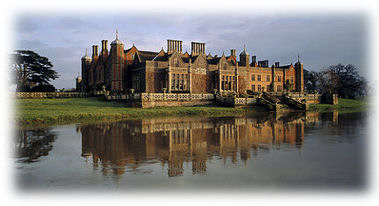Who was Henry Gregory? A good question! What is his connection with Charlecote? There are several letters amongst Sir Ed’s documents written by Harriet Fairfax, wife of Admiral Sir Henry Fairfax, to her nephew Henry Gregory. I initially assumed he was related to the Kinloch family but foraging did not provide any leads. Then it suddenly occurred to me; could Henry Gregory indeed be a Fairfax? I will go back to Sir Henry Fairfax, 1st baronet. Sir Henry married in 1830, Archibald Montgomery Williamson Ramsay and they had four children, three boys and a girl. William (b. 1831) was the eldest and when Sir Henry died in 1860, became the 2nd baronet. The second son, Thomas Edward (b. 1832) joined the East India Company and served as a barrister in Bengal. He wrote graphically about the Indian Mutiny in a letter to his father (see forage number 45). He never married and died in 1882 aged 50. Third son was Henry (b. 1837) who joined the Navy in 1850 and rose to the rank of Admiral. He captained “Britannia” the training ship where princes Eddy and George were cadets under his captaincy. The daughter was christened Elizabeth Mary Somerville and was always referred to in correspondence as E. Mary. This was undoubtedly to distinguish her from her aunt Elizabeth with whom she lived at Maxton. (I am unable to discover when in the 1830s E. Mary was born). In September 1861, E. Mary married James Liebig Gregory, son of William Gregory (1803-58). The Gregory family were for several generations well-known medical practitioners in Scotland and William’s father James was best known for formulating ‘Gregory’s Powder’ a rhubarb-based laxative of a bygone era! William turned his studies to chemistry and went to Germany to study under the great chemist Baron Justus Liebig (inventor of the Liebig Condenser). They became friends and William translated Liebig’s publications into English. In 1839 William married Lisette Scott and they had one son, James Liebig Gregory, born in May 1840. Not much is known about James before he married E. Mary Fairfax in September 1861 when he was 21 years old and E. Mary was in her mid-twenties. They had one son christened Henry Makdougall John Fairfax Gregory, born on 29th November 1862. Unfortunately, James died in May 1863 aged 23 leaving a young widow and a six-month old son. In 1872 Captain (as he was then) Henry Fairfax married Harriet Kinloch, daughter of Sir David Kinloch Bart. of Gilmerton near Edinburgh. They had no children but Harriet was very fond of her nephew Henry and they corresponded regularly. Harriet’s letters were often written in very endearing terms. Henry was not strong physically and he was rather eccentric with unusual views on life. Harriet had a strong Christian faith and her letters to Henry always included Bible verses. Henry died in June 1881, only 19 years old and Harriet took it badly. Henry kept all Harriet’s letters and passed them on to her before he died. They are now in Sir Ed’s possession. E. Mary lost a young husband and an even younger son but in 1884 she married again; Col. William Marshall Cochrane (1817-98). William was a nephew of the famous (or infamous) Admiral Thomas Cochrane, venerated in Chile and Peru for his part in the liberation of South American countries from Spanish rule and he was the 10th Earl of Dundonald. Elizabeth Mary Somerville Fairfax (Cochrane) died in November 1919 having survived her three brothers, two husbands and her son. I mentioned above that Sir Henry Fairfax, 1st baronet had married Archibald who died in 1844 aged 50. In 1851, Henry married again; the eldest daughter of William Astell, second son of Godfrey Thornton of Moggerhanger Park, Bedfordshire. William was a director of the East India Company for 47 years and MP for Bedfordshire. He was born a Thornton but changed his name to Astell on inheriting the manor at Everton, Beds from his Great Uncle. The Thornton family were bankers; Godfrey being governor of the Bank of England from 1793-95. One member of the Thornton family, Henry, an evangelical Christian, along with William Wilberforce and others formed what was known as ‘The Clapham Sect’ who were instrumental in getting laws passed to improve living conditions of the poorer classes as well is initiating the abolition of slavery. The wider connections of the Fairfax-Lucy family are intriguing and interesting (and there may be more to follow). Frank Storr . Charlecote Extras No. 7
|

